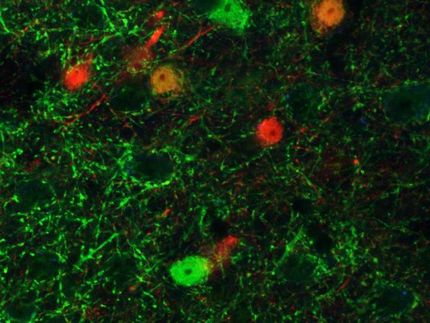Pregabalin and gabapentin in combination with other drugs - a potentially lethal cocktail
Advertisement
The addictive nature of pregabalin is well known. Due to its relaxing and euphoric effects, pregabalin (as well as gabapentin) is increasingly being abused as a drug. According to a current UK evaluation, the number of pregabalin and gabapentin-related deaths has increased and a corresponding increase is also to be assumed in Germany. The German Society of Neurology (DGN) warns against the misuse of drugs and is discussing a BtM obligation for the substances.
Pregabalin is a drug that is often used to treat epilepsy and is part of the standard therapy there. It is also frequently used for severe anxiety disorders and neuropathic pain. The medication is not dangerous per se, but can lead to addiction as it has a relaxing and euphoric effect. It is therefore increasingly being abused as a drug and then taken in high doses that exceed the normal dosage.
The substance becomes particularly problematic in combination with drugs such as opioids and benzodiazepines and/or alcohol. "This can quickly result in a deadly cocktail," warns DGN Secretary General Prof. Dr. Peter Berlit. "Mixed consumption can intensify the effect of the drugs and also lead to life-threatening poisoning, sometimes even to respiratory insufficiency and death. Unfortunately, it can be assumed that these cases are increasing." Another drug affected by abuse is gabapentin, which is also used for pain therapy and the treatment of epileptic seizures. As it is metabolized differently, it was considered safer and was often prescribed as an alternative to pregabalin. However, it is used intravenously or rectally by drug addicts, which significantly increases intoxication and toxicity.
An official analysis of death data from the UK showed that in 2022 a total of 552 deaths could be attributed to the use of gabapentin or pregabalin in combination with other drugs, compared to only 272 in 2018. A recent study from Northern Ireland [2] reports that pregabalin-associated deaths are mainly observed in men between the ages of 30 and 40, but the number of cases is also increasing in women. Previous drug use was known in 80% of those affected. Another finding from this study is that the lethal dose appears to be lower than previously assumed.
The German Medical Association's Drug Commission (AkdÄ) already warned of the danger of pregabalin dependence in its information sheet "Drug prescribing in practice" in 2020 and reported a 6% increase in the number of prescriptions in 2018 compared to the previous year. As the Bremen Association of Statutory Health Insurance Physicians announced [4], the number of prescriptions has risen sharply in recent years, from 37 million DDD in 2008 to 117 million DDD in 2019, according to the 2020 Drug Prescription Report. The medical profession was informed of the dangers and asked to check carefully whether there is a dependence or co-dependence on other substances when prescribing and to inform patients of the dangers. The corresponding warnings can now also be found in the prescribing information.
"Neurologists take this responsibility seriously, but they cannot always rule out misuse," explains Prof. Berlit. Pregabalin and gabapentin are indispensable drugs in the treatment of neurological diseases, for which there are no other effective therapeutic alternatives available for many indications. The neurological society therefore believes that banning the drugs is not an option. "Conditions for prescribing, such as an obligation to use BtM, must be discussed so that greater control is guaranteed and misuse is made more difficult," explains Prof. Berlit.
Note: This article has been translated using a computer system without human intervention. LUMITOS offers these automatic translations to present a wider range of current news. Since this article has been translated with automatic translation, it is possible that it contains errors in vocabulary, syntax or grammar. The original article in German can be found here.





























































